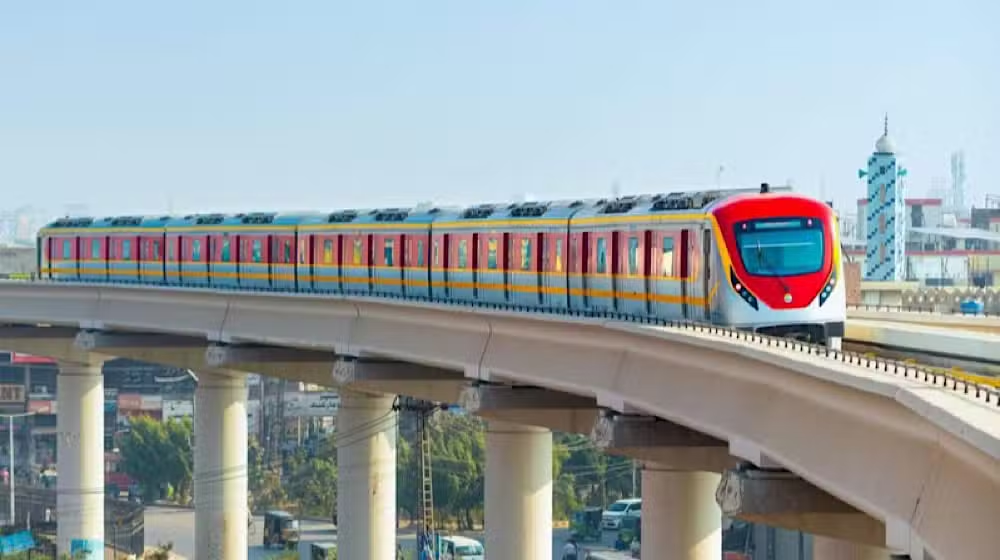Now Reading: Punjab Proposes New Fares for Lahore Metro Bus and Orange Line Train
-
01
Punjab Proposes New Fares for Lahore Metro Bus and Orange Line Train
Punjab Proposes New Fares for Lahore Metro Bus and Orange Line Train

The Punjab Masstransit Authority (PMA) is preparing a proposal to revise fares for Lahore’s major public transport services the Orange Line Metro Train, Metro Bus (Green Line), and all feeder bus routes. This proposed change comes as the provincial government faces growing financial pressure from rising operational and maintenance costs.
According to official sources, a detailed working paper on the fare hike will soon be presented during the PMA’s upcoming meeting. Once approved, the summary will move to the Punjab Chief Minister through the Transport Department for final authorization.

Proposed Fare Increase for Metro and Orange Line
Under the new proposal, the Lahore Metro Bus fare will increase from Rs. 30 to Rs. 40, while the Orange Line Metro Train fare will go up from Rs. 45 to Rs. 50. Similarly, a Rs. 5 increase is expected for all feeder and Speedo bus routes.
These adjustments are aimed at reducing the government’s growing subsidy burden while maintaining the quality and reliability of mass transit services across Lahore and other major cities.
Why Punjab is Increasing Metro and Orange Line Fares
Currently, the Punjab government spends nearly Rs. 21 billion annually to sustain mass transit operations in Lahore, Rawalpindi-Islamabad, and Multan. However, fare collection contributes only 24 percent of operational and maintenance costs. The remaining 75 percent or more is covered by government subsidies.
Just a few years ago, fare revenue made up about 32 percent of the total operational cost, but that number has declined due to the rising prices of electricity, fuel, and maintenance materials. The cost of imported spare parts and power bills for the Orange Line Metro Train, which operates on an electric system, have particularly strained the transport budget.
Officials explain that without revising fares, the system’s long-term sustainability could be at risk. Increasing fares slightly would help balance costs while continuing to offer affordable travel for commuters.
Balancing Public Needs and Financial Sustainability
The fare hike proposal has sparked mixed reactions among citizens. Some commuters believe that even a small increase can impact low-income passengers who rely on public transport daily. However, others understand the need for adjustment due to inflation and the rising costs of electricity and fuel.
Transport analysts suggest that the government may also explore alternative strategies to balance affordability and sustainability. These may include smart ticketing systems, discount packages for students and senior citizens, and digital payment incentives to encourage greater efficiency and reduce manual fare collection costs.
Impact on Commuters and the Transport System
If the new fares are approved, passengers will pay slightly more, but they can expect continued improvements in service quality and punctuality. The Punjab Masstransit Authority has already introduced digital tools like Metro Bus smart cards and mobile recharge options, making the system more user-friendly and transparent.
In the long run, these fare adjustments could help improve the condition of buses, ensure timely maintenance of metro stations, and potentially expand the network to other urban areas.
Public transport plays a crucial role in Lahore’s urban life, reducing traffic congestion and pollution. Sustainable pricing is essential to maintain these benefits for millions of daily commuters.
Looking Ahead: The Future of Punjab’s Public Transport
The Punjab government continues to invest heavily in improving public transport infrastructure. Projects like new feeder routes, electric bus trials, and better connectivity with suburban areas are already under consideration.
Authorities emphasize that while fare adjustments may seem inconvenient in the short term, they are vital to keeping the system reliable, safe, and energy-efficient.
Once the new fare structure is finalized, the PMA is expected to announce it through official channels and ensure that commuters receive proper information before implementation.
Conclusion
The Punjab Proposes New Fares for Lahore Metro Bus and Orange Line Train plan highlights the ongoing struggle between keeping transport affordable and maintaining financial stability. With operational costs on the rise, modest fare adjustments may be the only sustainable way forward.
By taking this step, the Punjab government aims to ensure that millions of people continue to enjoy safe, efficient, and modern transportation without service interruptions or quality compromises.











